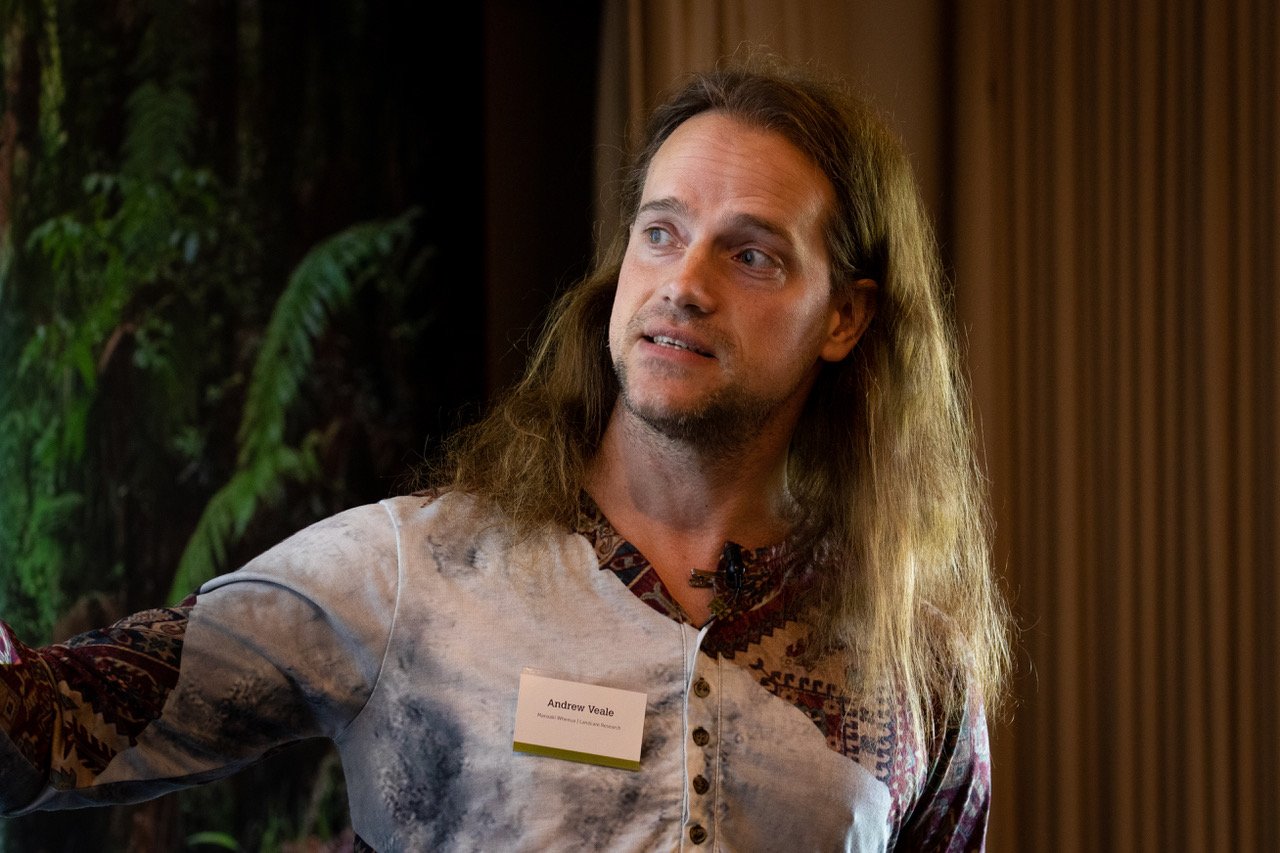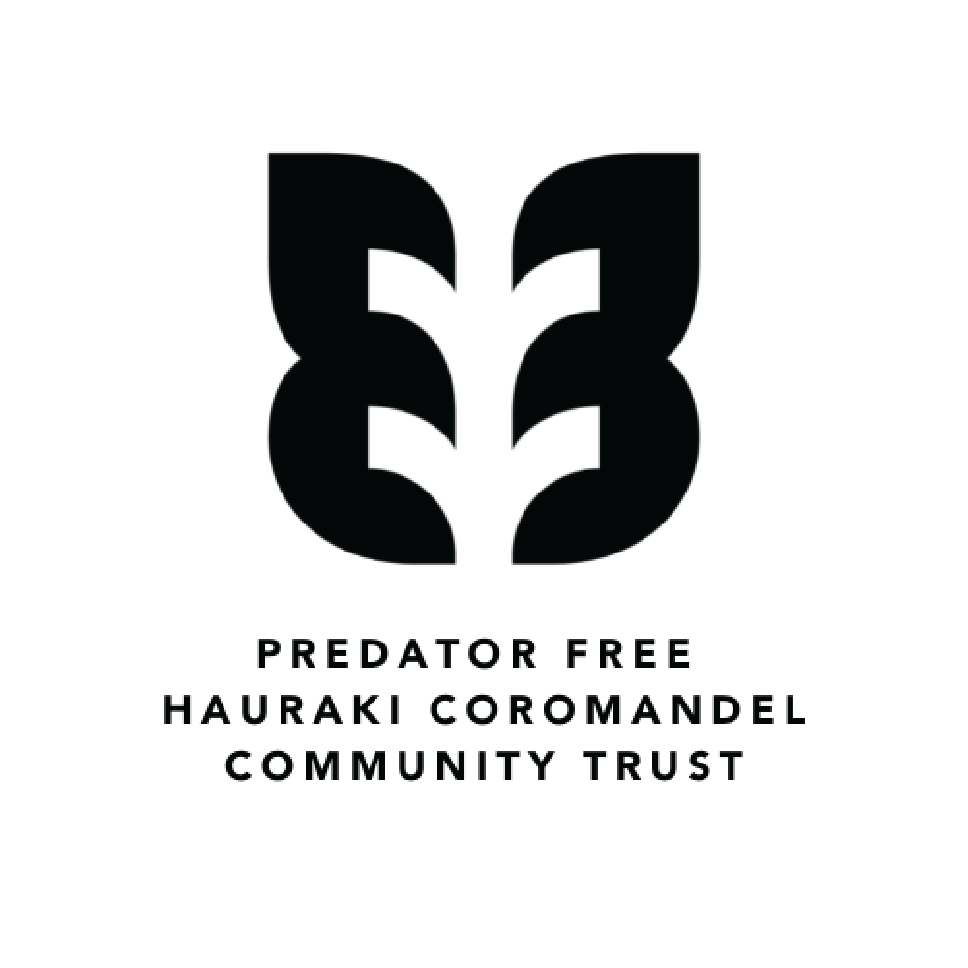Mustelid Summit: Dr Andrew Veale

When Dr Andrew Veale (Wildlife Ecologist at Manaaki Whenua - Landcare Research) spoke at Predator Free Hauraki Coromandel’s recent Mustelid Summit, he presented a strong case for how genetics aid in ongoing mustelid control efforts in Aotearoa.
Dr Veale is himself a long-time mustelid enthusiast who wears his love for stoats literally on his sleeve – a tattoo of the stoat genome he sequenced covers his forearm. Dr Veale led the stoat genome sequencing project, which used a stoat from right here in Hauraki Coromandel – we always love a local connection!
This Coromandel stoat is now in Auckland Museum and the genome, which involves terabytes of data, is available online. Dr Veale describes it as one of the best genomes ever sequenced, adding that “this genome is now where the human genome was at only a couple of years ago.”
This all seems very impressive stuff, but how does this help plan for the future of predator control?
To understand this, you need to take a look at the remarkable stoat eradication programme on Waiheke Island. If successful, Waiheke Island will be the site of the largest stoat eradication in the world. As there are still stoats on the island, thanks to the genome sequencing Dr Veale can drill down to see which litters the catches are coming from. Of one litter, the father and a number of kits were caught, but the mother remained free. She was obviously a modern working mother – able to multitask motherhood with being a stoat and avoiding traps – though trappers can now guess where she might be from the map of catches, and dogs are now looking in that area, hoping to find her den before a new litter leaves it. As well as an impressive way to drill down into data, this kind of work also shows the great importance in keeping good records of catches.
By looking at the genetics of the remaining stoats on Waiheke, Dr Veale can also see a large amount of inbreeding, which means that no new stoats (with shiny new DNA) have arrived on the island in some time. In fact, the whole population could have been founded by a single pregnant stoat fifty or sixty years ago. This is fantastic news as it shows that if the eradication is successful, it will likely not be threatened by any immigrant stoats. Waiheke is far enough away from the mainland that the eradication would be permanent.
Data provides other more obvious ways to add tools to the predator control kete. Project Janszoon in Abel Tasman National Park has provided Dr Veale with over a million trap nights from which to retrieve data. This is a remarkable lode of data, along with that collected on Waiheke Island, and it all goes towards telling a complete story of stoat behaviour. “At the end of this I can say ‘the chance of a stoat who is five months old going into a trap in April is this per night.’ And that’s really useful because I can feed this all into a computer and you can see, will my trapping regime work. But we need all of this data to tell you that.”
Dr Veale attended a stoat control hui at Te Papa in 2021 which brought together Aotearoa’s stoat experts from both the lab and the bush – stoat control scientists as well as project managers working on the ground with stoat control attended the hui. Some of this info was then disseminated to the participants of the Mustelid Summit, in order for those in the field to see what all the lab work has achieved. It’s an information loop: those clearing traps are feeding numbers back to researchers, so researchers can spot patterns and make future predictions and plans to guide trappers.
The dream for all this lovely data being passed around is that one day there will be a cohesive national strategy for all pest control programs. Sharing this data for all pests at a national level not only means sharing ways of doing things better, it also would lead to better learning of how to control pest populations.
Until the time when such a national program exists though, we luckily still have hui and summits where this kind of information can be shared and digested. In addition to this, as more and more smaller groups become au fait with logging catches accurately, it appears we are moving in the right direction for sharing data on a national scale. Dr Veale does however implore trappers to keep auditing their traps, and to move those that aren’t catching anything.
Dr Veale maintains that at the moment, the best measure of success is the number of kiwi or kaka chicks in the trapping area. While mustelids remain a threat to our native birds, and scientists and trappers alike continue to work on better ways to control mustelid numbers, those living in Hauraki Coromandel can be glad that the kiwi calls we hear at night show that we are on the right path.
To watch the full video of Dr Veale’s talk, go to: https://pfhc.nz/videos/v/mustelid-summit-dr-andrew-veale?categoryId=635882730e079e070a58b138

